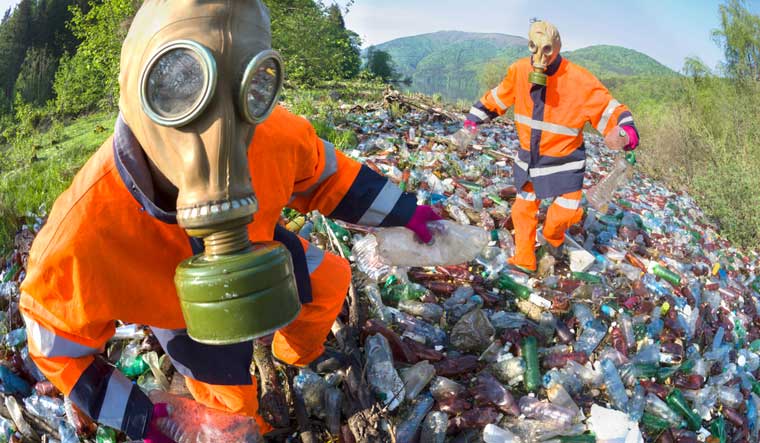New, Plant-Based Plastics Prepare For Take-Off
Jun 20, 2022 | Pratirodh Bureau
Existing petroleum-based plastics are durable, lightweight and ideal for use as food packaging but their role in climate change, waste, marine pollution and poor air quality means they need to be phased out. It’s time for new plastics to take flight
Plant-based plastics are only just starting to be more widely accepted. But challenges remain. If new plastics are an industry preparing for takeoff, then they are taxiing down the runway with the accelerator at full throttle. But the wheels haven’t yet left the ground: cost, production and disposal issues are preventing lift-off.
Existing petroleum-based plastics are durable, lightweight and ideal for use as food packaging but their role in climate change, waste, marine pollution and poor air quality means they need to be phased out. It’s time for new plastics to take flight.
The leading contenders to replace petroleum-based plastics are bioplastics. These have a similar molecular structure and qualities but are derived from natural resources such as plant-based starches and vegetable oils, and/or will decompose when disposed off properly.
Global production of bioplastics is expected to double from around 2.4 million tonnes in 2021 to around 5.2 million tonnes in 2023. Partly driving this demand, several food industries, especially those involving single-use applications, are starting to use bioplastics.
Last year, Coca-Cola announced a limited run of a 100-percent plant-based plastic bottle. Three years ago, Qantas ran an experimental zero-waste flight.
Among the most studied bioplastics are poly (lactic acid) {PLA} and polyhydroxyalkanoates (PHAs). Both are polymers: long chains of repeating molecular subunits.
PLA is assembled, using conventional chemistry techniques, from renewable ingredients, particularly sugar and starch. It is sometimes used as a clear plastic tub for take-away salad or as a bubble-tea cup.
PHAs are a family of related polymers assembled by various bacteria (for example Alcaligenes eutrophus and Ralstonia eutropha) as energy-storage molecules. PHAs are produced by fermenting sugar or lipids with the bacteria and extracting the polymer from the cells. PHA disposable knives and forks might accompany airline meals.
Traditional plastics are not often recycled and are discarded or incinerated with other solid waste. But PLA and PHAs are biodegradable; they are broken down by microbes in the right environmental conditions.
PLA is biodegradable under industrial composting conditions (at a temperature of about 58C) but may remain for up to 1,000 years in the ocean. PHAs are biodegradable in compost and also in marine environments.
With about 450,000 tonnes produced in 2021, PLA is among the largest produced biodegradable polymers in the world. But bioplastics face many challenges before they can be more widely adopted.
One of these challenges is cost. At around US$10 per kilogram, PLA’s price is still high. Increasing production efficiency and competition will likely drive prices down.
Similarly, new techniques to produce PHAs more cheaply are being explored. One research direction is to produce PHAs using inexpensive carbon feedstocks such as crude glycerol, a byproduct of biodiesel.
Another challenge is growing the feedstock sustainably. Agricultural activities associated with the production of PLA emit greenhouse gases, cause water pollution and occupy arable land.
One way to make PLA production more environmentally friendly is by optimising the conversion process of PLA.
One study showed the conversion of the source material to lactic acid releases more than 50 percent of the carbon dioxide from the entire process. This step is a prime target for optimisation ideas.
Other challenges hindering wider adoption include lack of adequate labelling or composting for bioplastics, and concern over contamination of recycling systems. PLA’s melting point is lower than for other plastics, so dedicated recycling plants are required to process it.
Global demand for bioplastics is expected to increase as pressure grows to phase out petroleum-derived plastics, so PLA and PHAs will become more widespread. But the obstacles to their sustainable production and disposal will need to be overcome before they truly take to the skies.
(360info.org: By Ahmed Z Naser, University of Guelph)
